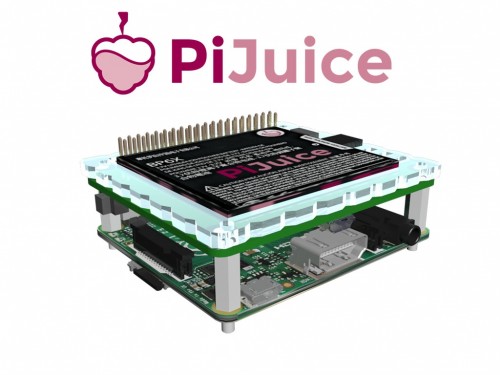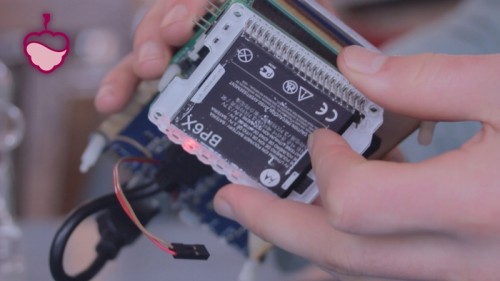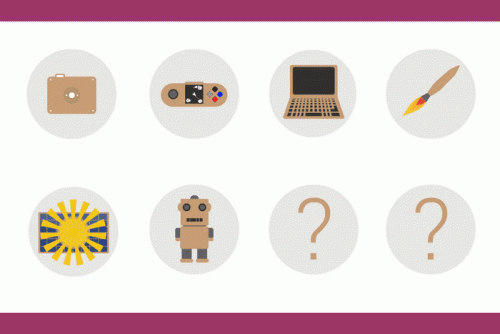| The six inch e-reader market is heavily saturated and many serious readers are looking for a large screen alternative. The Sony Digital Paper 13.3 inch e-reader fits the bill, but was only designed to read PDF files and is quite expensive at $999. Onyx is in the process of making a consumer grade e-reader using a 13.3 inch screen and employing e-ink Mobius that will be released this October. A source close to the situation has told Good e-Reader that “Onyx could have done a technologically sound big e-reader some time ago, but they are afraid the price would discourage the potential buyers. At the moment the Mobius screen costs around $600. The end product could cost 700-750 €/$. I don’t know why the company finally decided to run the risk, but Onyx now thinks there is a substantial market even at the higher price tag.” e Ink Mobius is perfect for large screen displays because it was developed to weigh less than 50% of an equivalent glass based TFT and maintain flexibility. This is particularly important for mobile products. The standard 13.3 inch screen has a resolution of 1200×1600 pixels with 150 PPI, which is fairly solid to read digital content such as books, magazines, newspapers and technical documents. The new Onyx 13.3 inch e-reader will likely be running Google Android 4.4 and this will allow users to install their own apps. This is particularly important because you can simply install the Kindle, Kobo or Nook app to buy and read e-books in a multitude of formats. Onyx Developing 13.3 Inch e-Reader is a post from: Good e-Reader |
A Semi-automated Technology Roundup Provided by Linebaugh Public Library IT Staff | techblog.linebaugh.org
Thursday, March 26, 2015
Onyx Developing 13.3 Inch e-Reader
Anime and Manga: What Pirating Is Doing to the Industry
| In 2014 Japan passed a new anti piracy law and had begun cracking down the whip on copyrighted materials and intellectual properties such as anime and manga from Japan. The Japanese government then commanded a lot of illegal streaming and hosting sites which has resulted in a lot of websites getting shut down. With the help and cooperation of fifteen major anime production companies and manga publishers, the Japanese government started a huge extermination operation against 580, and counting, foreign sites which have illegally uploaded anime and manga contents on the web without the copyright holder’s permission. As Japan has began supporting the genre as one of their important cultural exports, there seems to be no end of illegal uploading of anime and manga via pirating sites, mainly operated by the Chinese. In the year 2013, the Cultural Affairs Agency estimated a loss at 560 billion yen ( around US $5.5 billion) in China alone. Japan’s Ministry of Economy, Trade, and Industry (METI) revealed it’s Manga-Anime Guardians project, which will monitor and remove illegally uploaded copies of anime and manga. The project aims to create an environment where fans can truly enjoy official creations, spur creations and continue to support and cultivate new talent. The METI states that online piracy hurts Japan at nearly $20 billion a year. Over half of US anime and manga fans read and watch pirated works, according to the METI. The project is a part of the Manga-Anime Anti-Piracy Committee, which includes Aniplex, Kadokawa, Good Smile Company, Kodansha, Sunrise, Shueisha, Shogakukan, ShoPro, Studio Ghibli, Tezuka Productions, Toei Animation, TMS Entertainment, Bandai Namco Games, Pierrot, and Bushiroad. It’s certainly an interesting topic, growing up all through out high school, I certainly didn’t have much of an income so streaming from websites or reading online scanlations was the only way for me to keep up to date with a lot of anime and manga, not to mention at the time, the Western audience was definitely suffering from lack of material. Let’s face it, for the almost 100+ anime that get released each season, there are only so many official sites that do grab these shows or manga. Nowadays it’s a little different, we have official sites that are more accessible, Crunchyroll and Funimation being the two main contenders, and more and more anime and manga have begun getting licensed. Which is fantastic, but even Crunchyroll will have restrictions on which countries can view what. But all that aside, I do wholeheartedly believe we should be focusing our money on official merchandise and subscriptions to help the industry out. Can you imagine what kind of shows, licencing projects and possible earlier anime releases we would get if Japan wasn’t getting hit for $20 billion a year? It may seem like you are doing completely harmless by reading that latest released scanlation or downloading the newest episode of your favorite show, but please think of the developers, support the artist and it’s industry! And after all of this, what do you all think? As I noted earlier, I can see the pro’s and con’s for both but I know which direction I’ll be going towards from now on. If you’d like to view the METI document which has a list of which sites have been taken down, you can view it here. The site is all in Japanese but you can find the list of websites in English on pages 11 and 12 for manga scanlation sites, pages 13-15 for video hosting sites (Youtube, Dailymotion etc.) and pages 16-18 for torrenting sites. And those who’d like to support M.A.G, Manga – Anime Guardians, you can find them and their message here! Anime and Manga: What Pirating Is Doing to the Industry is a post from: Good e-Reader |
Digital Magazine Growth Reaches as High as 78%
|
The February report looked at the combination of print and digital readers–both online and mobile device based–for US magazines, and found a 12.6% increase from February of last year to this year. The 2015 numbers showed a total audience of over 1.7 billion readers across the various pathways. “Audience growth was driven largely by increases in the total video audience, which rose 18.7%, and magazines' mobile audience, which soared 78% compared to the year before. “Mobile readers increased from 14% of the total audience to 22% over the same period. Their gross Web audience, including desktop and laptop, increased 6.9% over February 2014 — but in proportional terms, the Web audience actually shrank from 17% to 16%.” This kind of growth, when coupled with the report earlier this week on the trends impacting different age demographics of newspaper readers, should serve as an illustration of where publishers and advertisers choose to focus. The earlier report pointed out that millennials are not consuming print newspapers in anywhere near the numbers the industry once saw, and that more than half of the 1000+ survey respondents didn’t pay for any type of news, digital or otherwise. Instead, both newspaper and magazine publishers need to take a hard look at the current behaviors of their target audiences, namely that this kind of reading is happening online or on mobile devices, and then plan accordingly.
Digital Magazine Growth Reaches as High as 78% is a post from: Good e-Reader |
URL: http://goodereader.com/blog/digital-publishing/digital-magazine-growth-reaches-as-high-as-78
PocketBook Aqua Withstands Being Frozen in Block of Ice (Video)
| The PocketBook Aqua ebook reader is known for being waterproof and dustproof, and now you can add freeze-proof to the list as well. The PocketBook Aqua was recently subjected to a freeze test by a Ukraine-based tech site, Vido.com. The device was submerged in a plastic container and placed in a freezer for 16 hours. […] |
URL: http://feeds.the-ebook-reader.com/~r/feedburner/cmWU/~3/qqgU2-1bwPE/
How digital libraries are helping prisoners across the country
| Recently we spoke with Cindy Mclaughlin of the American Prison Data Systems (APDS) about their OverDrive-powered National Corrections Library (NCL), a first of its kind digital library for inmates at correctional facilities across the country. In the short time since the NCL went live they’ve seen great success with prisoners of all ages engaging in digital reading as well as a decrease in violence in the facilities. What follows is her story of adoption and integration of their system.
Describe your situation and why you wanted a digital reading solution?
Describe how your set up process has been with Team OverDrive? Ours is a unique case, as we require both technical security – our users are not allowed to access the main OverDrive website, social media, or any other external website – and a curated book list that's both engaging to inmates, and non-threatening to our facility clients.
How have you implemented the service? APDS offers National Corrections Library to each of our facilities, free, as part of the broad service we provide. Each of our inmate tablet users has access to NCL. What type of training have you provided for your staff? Relevant APDS staff went through a phone- and PPT-based and online training to help us administer our library, and understand the features and tools available to us. How has the service been received? NCL has had tremendous acceptance both by our facility clients and the populations they serve. We've had thousands of checkouts across all our users since we launched NCL in September, 2014. We get ongoing feedback from facility staff, teachers, and inmates themselves with thanks and encouragement to continue this great program. Any specific examples of how it's being used? The Indiana State Department of Corrections uses NCL in a juvenile girls' maximum security prison. We've watched the girls checking out titles steadily, and increasingly, while violence in the facility has gone down substantially since our solution has been implemented. Corrections Officers attribute the reduced violence, in part, to increased recreational reading via NCL. |
URL: http://feedproxy.google.com/~r/DigitalDistributionBlogOverdrive/~3/cwxxBWIP414/
PiJuice: portable power for your Pi projects
| Helen: some Kickstarter campaigns just jump out at you. When I took a look at PiJuice it was obvious it was the real deal – they’ve only gone and sorted out portable power for the Raspberry Pi, with bells on. Their Kickstarter runs until Tuesday, so you’ve got the weekend to jump on board. Here’s Aaron Shaw to tell you more. I started playing with the Raspberry Pi since the very beginning and after being involved in The MagPi and various other activities I am now fortunate enough to call Raspberry Pi tinkering my "work". The thing that got me hooked back in 2012 was the hardware and physical computing capability – writing code to do things in real life (probably because of my background in Automotive Engineering) and I still spend a considerable amount of my time just learning new things and playing around with everything the Raspberry Pi has to offer. It has been a fantastic opportunity and I want to share it with as many people as possible.
Around a year ago I met Harry Gee from PiBot and we started by just throwing around our ideas for how we could help to make the Raspberry Pi even better. One of the things that we had both found difficult was creating portable or remote projects – it was of course possible, but it was just a lot harder than it needed to be. This ultimately led us to the idea of making a neat, safe, portable power solution for the Raspberry Pi to allow people to do even more exciting things with their Pi, whilst saving a lot of time and effort in the process.
We've called this the PiJuice and it's the ultimate product for portable and remote Raspberry Pi projects. The idea with PiJuice was to remove a barrier to entry from portable Pi projects so that beginners and professionals alike could focus on building, making and learning rather than worrying about the complexities of lithium battery charging and other electronics issues, whilst reducing the costs in the process.
Maker Kits – Made for MakersPiJuice is more than just an add-on board. We are passionate about education and are keen to turn PiJuice into a modular project platform – a way to allow people to build their awesome ideas much more quickly and easily. To kick things off and provide some inspiration we have developed a number of exciting tutorials and projects including a Raspberry Pi games console, a compact camera, a Pocket Pi and more.
We are calling these Maker Kits and they are already available to purchase in kit form from our Kickstarter page and are being uploaded as free guides on Instructables. These guides will soon be turned into high quality step-by-step guides that you can either use with our Maker Kits or to build and make your own. Free Off-Grid Power To the Pi
When creating Raspberry Pi projects outdoors we've also been interested in using solar power as it is free and renewable. We've worked hard to create an efficient and low cost solution that will open up new off-grid and sustainable applications for the Raspberry Pi. The PiJuice Solar has additional circuitry which adds functionality to enable truly autonomous, self-monitoring operation of the Raspberry Pi – perfect for weather stations, remote camera systems for nature watching and more. Additionally, we are actively investigating possibilities for affordable wind and thermoelectric power generation with PiJuice Solar for added flexibility. What would you do with yours?
We are really interested in what you want to do with your own PiJuice. We want to create the projects that appeal to you the most, so please suggest us your ideas in the comments, or on Twitter (@ThePiJuice) using the hashtag #ProjectPiJuice to get our attention. We will turn the best of these into free projects for everyone to enjoy! We really hope to help as many people as possible create awesome portable Raspberry Pi projects as well as continuing to create beautiful guides for cool projects! We're currently coming to the closing stages of our Kickstarter and would appreciate any support to help make PiJuice even better – http://pijuice.com. – Aaron & The PiJuice Team |








